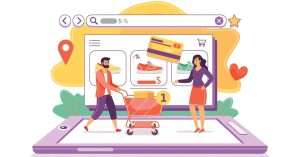Consumers love a good experience. We all like it when the store owner recommends a product based on our preferences or when an eCommerce website gives us special discounts or customized product bundles that seem “just right”.
According to a study by Eventbrite, 3 out of 4 millennials prefer to spend money on experiences rather than on anything else.
It would seem that B. Joseph Pine II and James H. Gilmore were right when they wrote way back in 1998 that the experience economy would be the next wave after the agrarian and industrial economy.
Contact us – Learn How Ignitiv Can Help
But what does the experience economy mean?
The experience economy is where customers are willing to set an economic value on the overall experience they get when they interact with a brand. These customers believe that every touchpoint with the brand has some meaning and they set a premium on transactional elements or touchpoints that make them feel good, make their task of buying easier or acknowledge them in some significant way. In the experience economy, companies use goods and services as core elements in the experience they deliver but they curate a variety of other elements too across the entire customer lifecycle with the overall experience in mind.
There are various reasons that make the experience economy so special. A good experience is more memorable than a commodity. A commodity gives momentary satisfaction. An experience creates a long-lasting memory. A commodity (or even a product) can be compared with others and evaluated based on features and utility. It’s harder to compare experiences because they are linked to emotions.
That’s the reason why the experience economy has been on a constant rise for quite some time.
By 2023, the experience economy is expected to be worth $12 billion.
What’s Behind The Meteoric Rise Of The Experience Economy?
1. Change in customer behavior
Today’s customers have access to real-time information. Thanks to technology and social media, they are more aware of what’s trending more than their predecessors. The convenience and speed in getting what they want has changed the behavior of customers. There has also been a significant shift in spending habits. Millennials, for instance, seek deeper connections. They like to share their experiences on social media – be it positive or negative. In fact, a study by the Sitel group showed that customers were 49% more likely to share their positive experiences on social media. These factors have contributed to companies becoming more experience-focused.
The Impact Of Customer Analytics In The Age Of The Omnichannel Customer
2. Personalized
and connected experience
This is the age of the digital native. Companies that offer connected experiences reported a 50% increase in their revenue. So, what makes connected experiences tick? A Google study revealed that 90% of device owners shift between different devices to complete their tasks. Customers prefer a seamless experience where they could shift from one device to another without any disruption. That’s why retailers and eCommerce marketers have been focusing on creating connected experiences. A connected experience gives the customer the power and flexibility to shop the way they want. Take the beauty brand Sephora, for instance. They have led the connected experience in the beauty space by providing a consistent customer experience across all channels. So, customers can try virtual makeup and receive personalized recommendations, even when they enter a shop. Retailers and eCommerce companies must take time to analyze the behavior of their customers and leverage tools to personalize the communication and experience of the customers. Options such as click-and-collect or buy-online-pickup-in-store (BOPIS) are other factors that could improve the customer’s experience.
3. Flexible payment options
According to a study, 48% of customers prefer to shop with brands that offer flexible payment options. To thrive in a hyper-competitive space, retailers and eCommerce companies must think beyond cash and card payments. The advent of digitalization has simplified the way customers pay for products. They can either pay by cash and card or through new options such as wallets. Customers can also opt for alternate options such as buy now, pay later (BNPL), and installments. According to a study by Sezzle, 55% of customers abandon their carts because they find the total price to be too high. Flexible payment options encourage the customer to purchase the product without worrying unduly about the prices. It also gives them the freedom to buy high-value luxury products by paying later or in installments. More importantly, flexible payment options leave the customers satisfied, and they yearn to shop again and become loyal customers.
4. New technologies supporting the transformation
To make the customer’s experience seamless, retailers and eCommerce companies will have to invest in technologies that support this transformation. For example, eCommerce companies need to integrate their backend systems like ERPs, order management platforms, and 3rd party services to provide a seamless experience to customers. They may also have to use microservices and headless architecture for better agility. Similarly, retailers need to integrate their POS with ERP and merchandising systems to offer customers convenience and a better experience. They could also use Artificial Intelligence (AI) to improve the experience and Augmented Reality (AR) to create an intuitive experience within the stores. Technology helps companies to bridge the gap between different channels and build the connected experience that customers love.
Conclusion
The pandemic changed the retail game by bringing the physical and digital worlds together. With customer behavior having undergone a transformation, retailers and eCommerce companies need to focus on customer experience more than ever. The experience economy is set to grow. It’s up to these companies to work with a partner who can help them to create engaging experiences for customers. Ignitiv has been at the forefront of building such experiences for both retail and eCommerce companies. We have over 20 years of experience working with B2B, B2C, and B2B2C. We provide technical expertise that has enabled companies to grow their revenue, enhance their conversions, and increase their average order value (AOV).








